

Top 15 Resume Mistakes That Are Quietly Costing You Interviews
Your resume may be quietly costing you interviews. Fix typos, show measurable impact, highlight modern skills, and tell a clear, tailored story.

Your resume may be quietly costing you interviews. Fix typos, show measurable impact, highlight modern skills, and tell a clear, tailored story.
What You’ll Learn in This Blog
Let’s be honest — job hunting in 2025 feels like applying to Hogwarts with a blindfold on.
You send out resumes, tweak a few lines — and then, silence. No “thanks for applying.” No interview invite. Just an algorithm somewhere deciding you’re not quite it.
You’re not underqualified — you’re just undervalued on paper
Whether you’re a mid-senior professional plotting your next leap, a new graduate craving direction, or an executive quietly reinventing after a long run, your resume is more than a list of jobs. It’s your professional story, translated for today’s attention span.
Here’s the truth: most resumes aren’t bad — they’re blurry. They undersell the brilliance that’s already there.
Let’s map this out.
Let’s start small—literally.
A missing comma, a “manger” instead of “manager,” or a bullet that trails off mid-thought.
Recruiters aren’t hunting for mistakes.
Resume mistakes jump off the page.
And when 200+ applications hit their desk, one typo can make you look like someone who doesn’t check their work.
How to fix it: Proofreading isn’t optional; it’s a strategy.
Read aloud, read backward, run it through Grammarly, and have one trusted human—ideally outside your industry—give it a read.
A polished resume says, “I respect your time, and I respect my work.”

Picture this: a recruiter loves your background but emails you at an address you don’t check anymore. Or worse—they see a novelty handle from 2009, and close the tab.
Your contact section is tiny, but it’s prime real estate. It’s your digital handshake.
How to fix it: Keep it clean and current.
Use a professional email (firstname.lastname@gmail.com). Link your updated LinkedIn—not the one that still says “seeking opportunities.” Add a portfolio link if your field calls for it.
Recruiters check your online presence before they reach out, so make sure your photo, headline, and top section align with your resume.
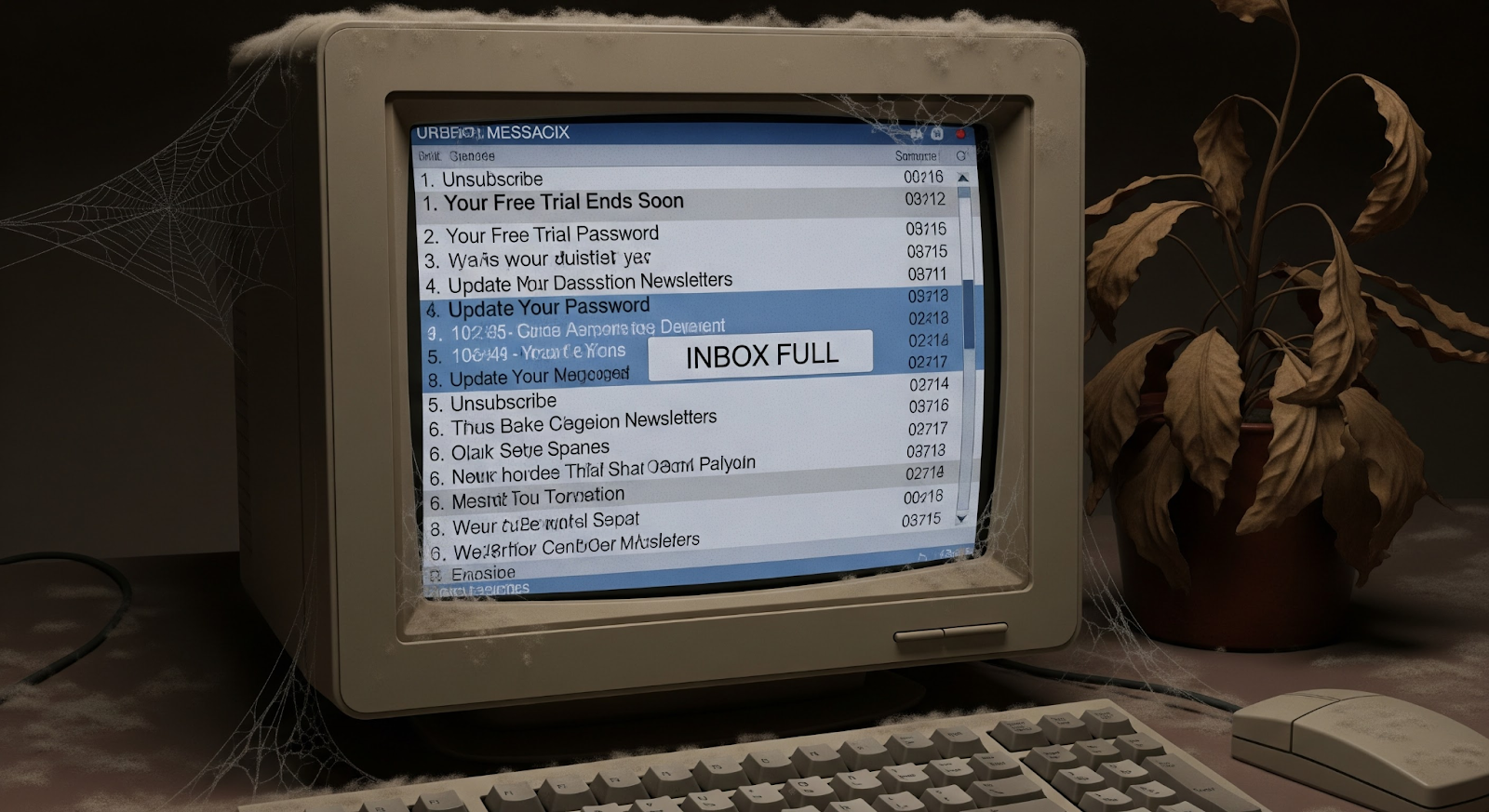
Sending the same resume to every posting is like showing up to every meeting with the same canned answer.
Recruiters can feel it.
They see generic phrasing, broad strokes, and no alignment with the role. They move on—not because you’re unqualified, but because your story feels untailored.
Here’s the framework:
So in short, the secret sauce is your voice, your examples, and your impact.
Generic resumes don’t get remembered — strategic stories do.
That’s why we built The FutureStree Five™, our signature framework for transforming your career narrative:
Career Clarity. Professional Branding. Network Activation. Interview Mastery. Accountability & Momentum.
Each step helps you show up with direction, not guesswork — so your résumé feels less like a document and more like a declaration.
We don’t do templates. We do clarity.
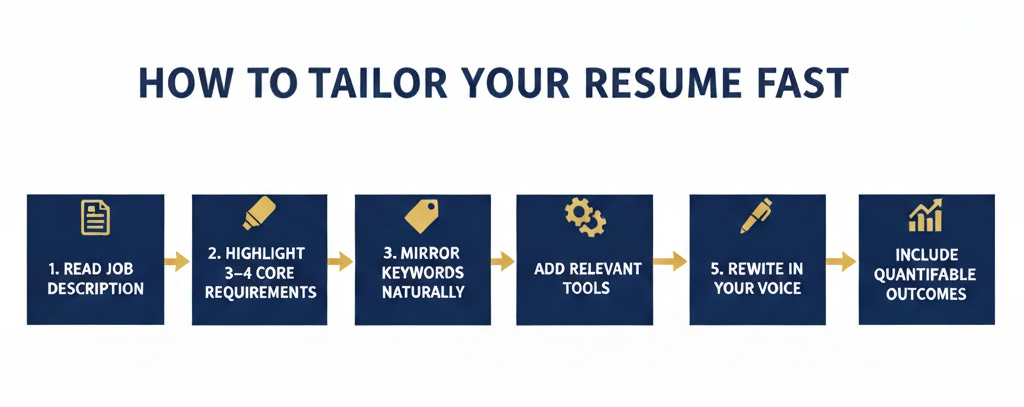
“Results-oriented professional with a proven track record of success.”
That’s not a summary. That’s white noise.
How to fix it: Skip the fluff. Lead with clarity.
Here’s what your before and after should look like:
Before: Motivated marketing professional seeking growth-oriented role.
After: Strategic marketing lead with 10+ years helping SaaS and tech brands grow revenue and recognition through data-driven storytelling.
See the difference? The second one positions you as the expert, not the applicant.
Remember: clarity creates confidence — and confidence gets callbacks.
Clarity isn’t luck — it’s a process.
Our Career Clarity and Professional Branding phases from The FutureStreet™ Five™ help you find the words recruiters actually remember.
Together, we define what makes you valuable — and translate it into résumé, LinkedIn, and interview language that lands.
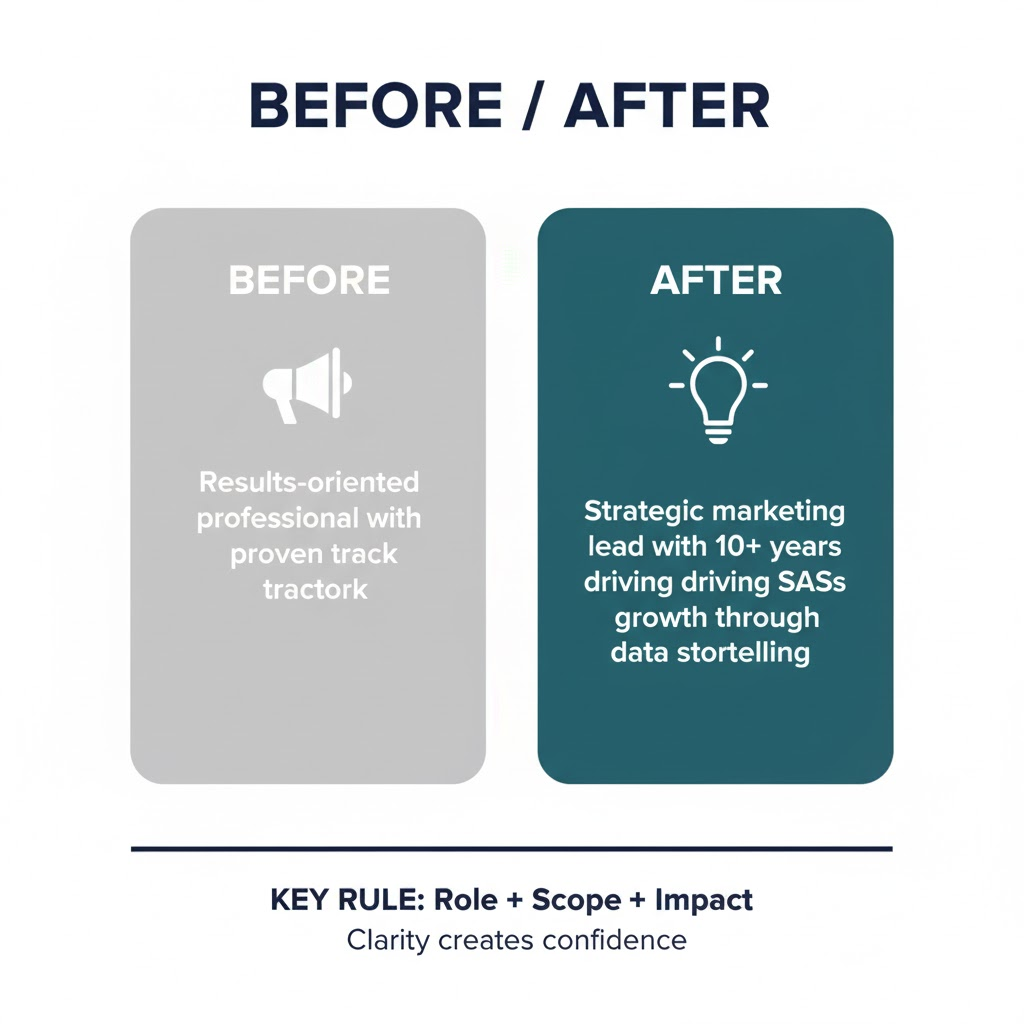
“Responsible for managing client relationships.”
Cool. So were 500 other people.
Recruiters don’t want your job description—they want your impact.
How to fix it: Start each bullet with a strong verb (led, built, increased, streamlined) and show what happened because of you. Add numbers when you can:
Example: Led a 6-person design team to launch a campaign that increased engagement by 48%.
And if you can’t find the numbers, describe outcomes: “improved client retention,” “reduced costs,” “accelerated delivery timelines.”
The goal is to show direction and momentum.
You’re not just doing the job — you’re driving results.
Through our FuturePivot™ coaching and Job Search Mastery™ workshops, we help you quantify and communicate your achievements with confidence.
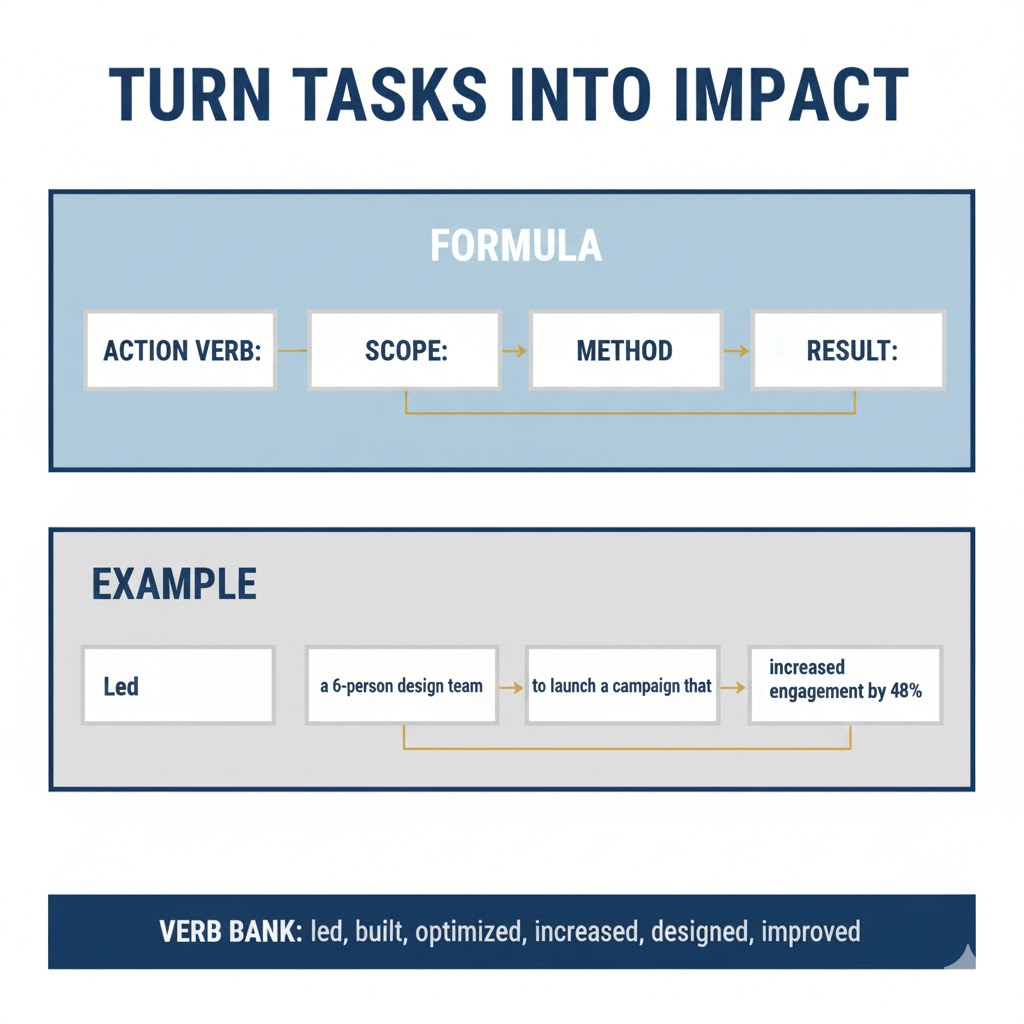
Here’s the not-so-fun reality: Your first reviewer probably isn’t human.
Most Fortune 500 companies — and many startups — use Applicant Tracking Systems (ATS) to filter resumes. These systems scan for specific keywords, skills, and formats. Miss them, and your resume never lands on a recruiter’s desk.
How to fix it:
Don’t fight the system — work with it.
An ATS-friendly resume isn’t about gaming the system — it’s about making sure your story actually gets seen.
And your story deserves to be seen.

2025 is hybrid and asynchronous.
If your resume doesn’t show that you can work — and lead — remotely, you’re underselling yourself in the fastest-growing job market.
How to fix it: Add a short section for Remote Tools & Skills. Mention platforms like Asana, Slack, Notion, or Trello.
Example: Managed a remote team across three time zones; cut turnaround by 15% by standardizing async workflows.
This isn’t just about showing tech fluency — it’s about proving adaptability, and adaptability speaks louder than geography.
Work has changed — your story should, too.
Our FutureEdge™ interview prep and Career Kickstart™ programs show you how to highlight remote fluency, digital collaboration, and modern leadership — the skills hiring teams actually scan for.
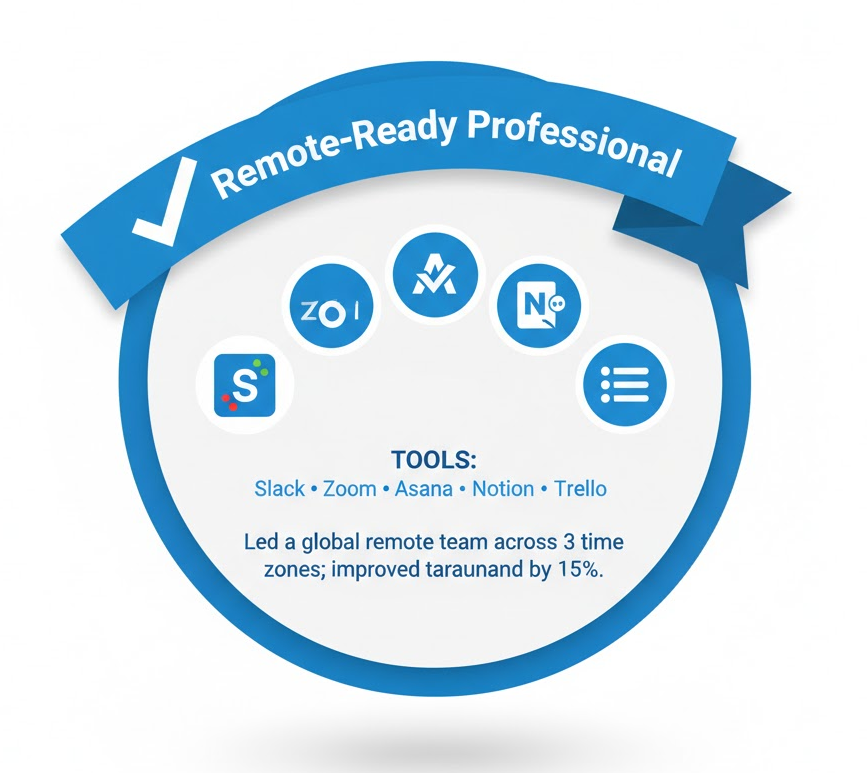
Still listing fax machines or Word as a skill? Time to clean house.
Outdated or irrelevant info doesn’t just clutter your resume — it sends a subtle message that you haven’t evolved.
How to fix it: Keep the last 10–15 years of experience, max. Remove unrelated info, replace dated tools with modern ones (ChatGPT, Zapier, Figma, etc.), and only include hobbies if they reinforce your career narrative.
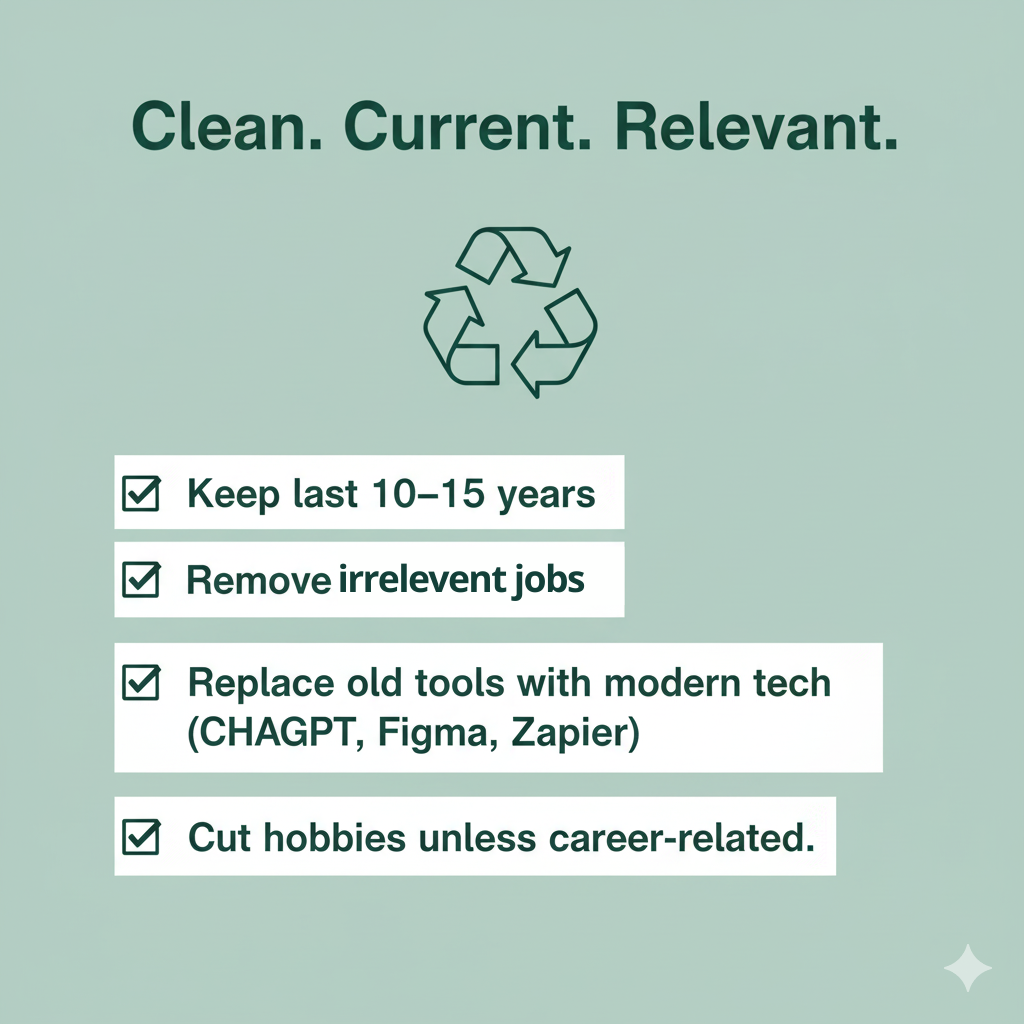
When recruiters say they spend 6–8 seconds per resume, they’re not exaggerating.
Three pages communicate indecision, not depth.
How to fix it:
Your goal is relevance over volume, because a concise resume signals confidence.
It says, I know what matters — and I’m not here to waste your time.
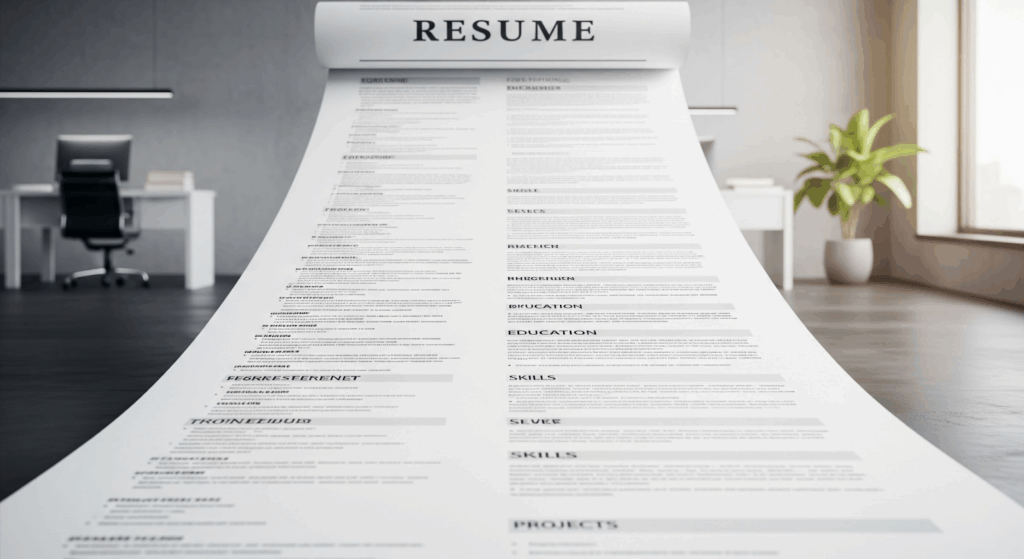
Design can make or break your first impression. A cluttered resume is like a cluttered desk—no one knows where to look first.
If your resume has columns, text boxes, icons, or more than two font styles, it might look beautiful but perform terribly.
Recruiters spend seconds skimming. Don’t make them hunt for what’s important.
How to fix it: Go clean and modern. Stick with one column, plenty of white space, and clear headings. Use 10–12pt fonts and a simple hierarchy (bold for role or company—just be consistent).
What looks sleek in Canva can break on upload. Clarity is the real beauty.

Gaps happen—layoffs, health, caregiving, sabbaticals. Silence around them makes recruiters uneasy.
The blank that is essentially a simple part of a full life will be filled in, and not always kindly.
How to fix it: Add a short line of context:
You don’t owe anyone your full story, but when you name a gap with clarity and poise, you shift it from a red flag to a reflection of intentionality.
Name it clearly. Own it confidently.

“Dynamic go-getter.” “Team player.” “Result-oriented leader”
All these professional-sounding words are empty phrases that blend you into the job applicants choir.
How to fix it: Replace adjectives with evidence.
Before: Innovative problem-solver with a passion for excellence.
After: Developed a new onboarding process that cut ramp-up time by 30% and improved retention by 12%.
Show, don’t tell.
It’s not about modesty or marketing. It’s about credibility. And credibility gets interviews.
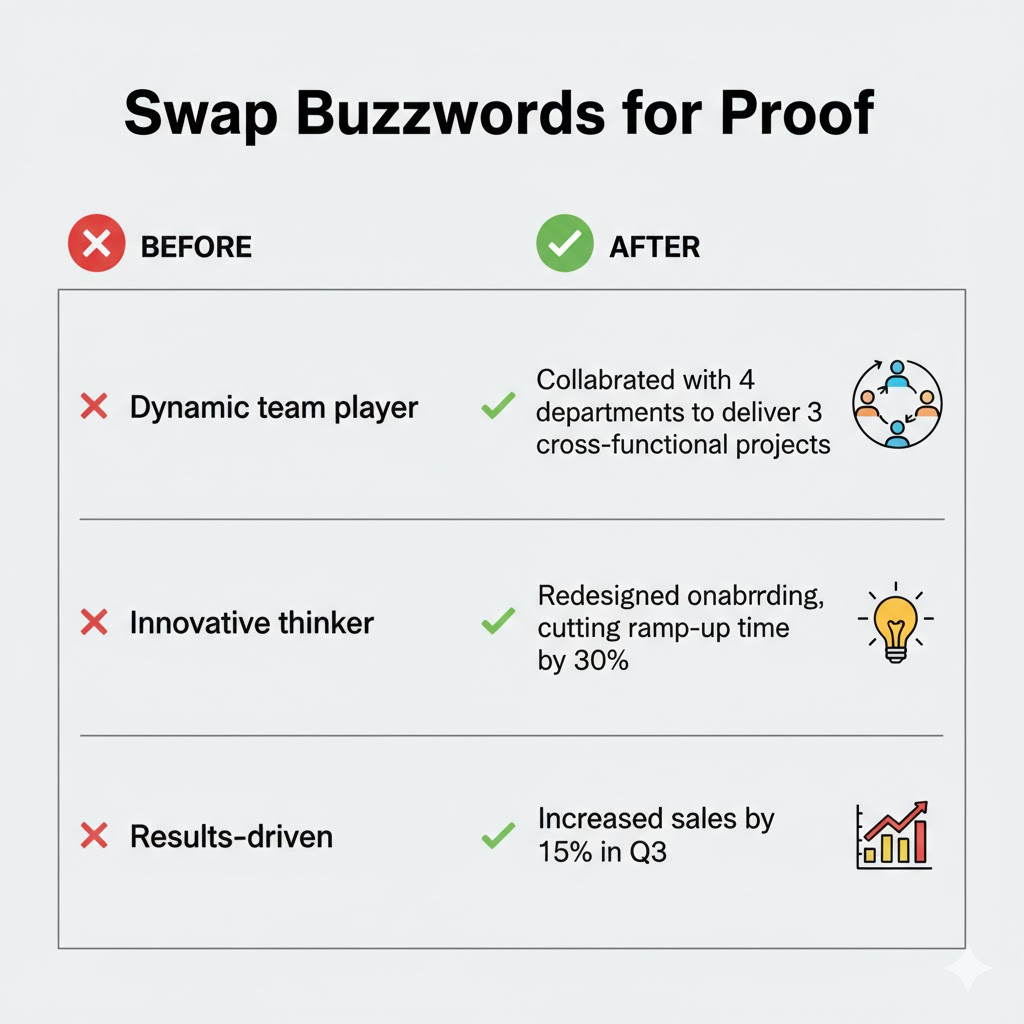
Some resumes still include marital status, full home address, and even number of children. (Yes, really.) Others list hobbies like “reading” or “traveling.”
None of this helps you. And in some cases, it can even bias your application.
How to fix it: Keep it minimal: city + state (or “remote-ready”), phone number, professional email, LinkedIn URL.
That’s it. No birth dates. No headshots (unless you’re in a market or industry that expects them).
Your resume should spark curiosity about your experience—not your personal life.
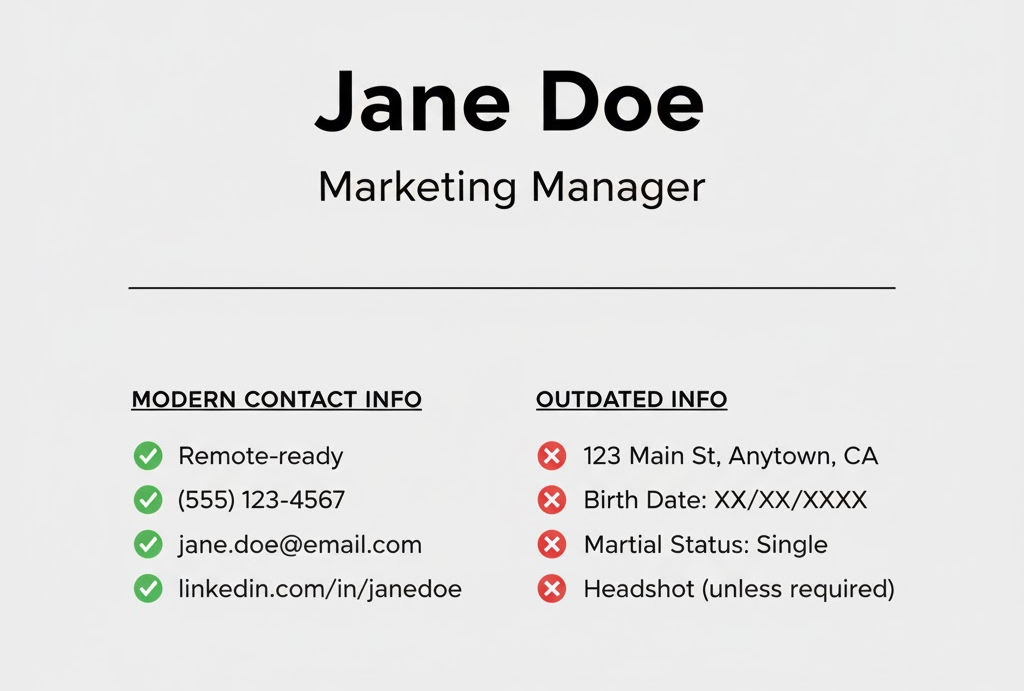
Here’s a secret most job seekers don’t know: recruiters will almost always check your LinkedIn before they call you.
Mismatched dates or titles erode trust.
How to fix it: Audit LinkedIn the same day you update your resume. Match job titles and dates exactly. Add narrative summaries under each role to expand what your resume condenses.
Think of your resume as the highlight reel.
LinkedIn? The director’s cut.
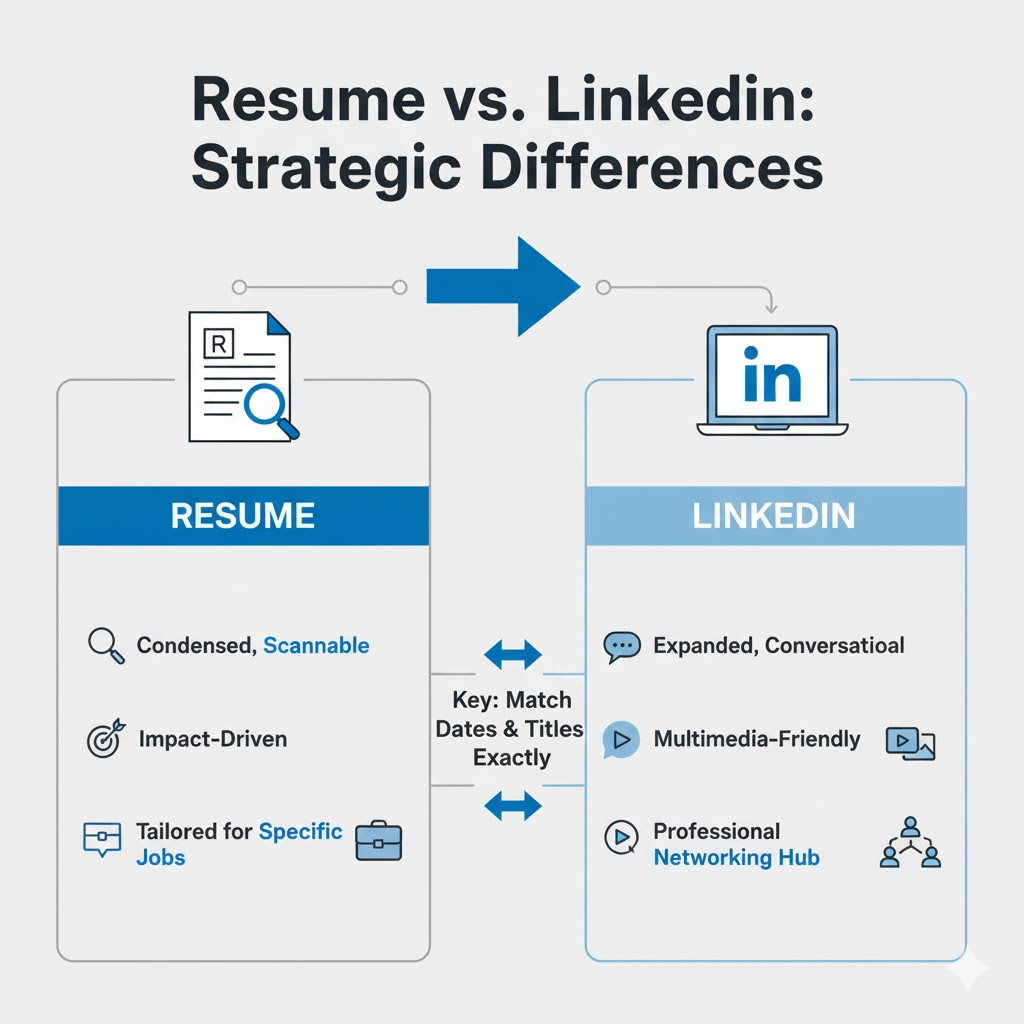
Recruiters read for growth, not exaggeration.
Identical duties across roles read flat; inflated claims read false.
How to fix it: Show progression through scope, not titles.
If your role stayed the same but your impact grew, highlight that:
Example: Initially hired as coordinator; now manage a cross-functional team of five and oversee $2M in projects.
And if you’re tempted to inflate — don’t. Good recruiters have radar for that.
Authenticity travels further than embellishment ever will.
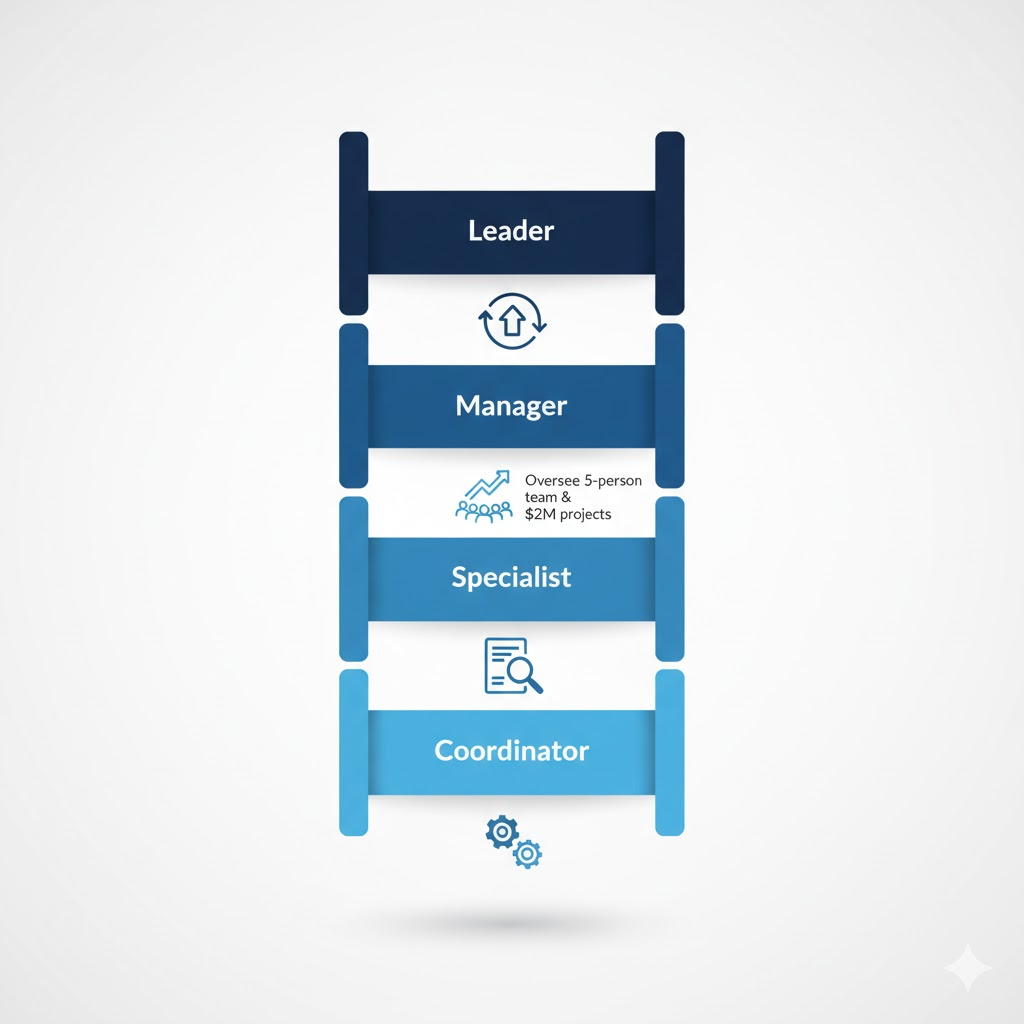
Focused. Fresh. Future-oriented.
After hundreds of client rewrites and thousands of recruiter conversations, we’ve distilled resume excellence into a simple framework.
Focused: Every line serves a purpose and aligns with your next role — not your last one.
Fresh: Your design, tone, and language reflect who you are now. Clean, relevant, confident.
Future-oriented: You’re pointing toward what’s next, not recapping the past.
When your resume passes the 3 F test, it becomes more than a document—it becomes a reflection of your direction.

| Mistake | Why It Hurts | Quick Fix |
| Typos & grammar | Signals carelessness | Proofread with tools + read aloud |
| Generic resume | Feels untailored | Mirror JD keywords; customize |
| Weak summary | Wastes first scan | Lead with role, scope, outcomes |
| Ignoring ATS | Invisible to screeners | Use standard headers + keywords |
| Outdated skills | Looks irrelevant | Swap in current tools + remove fluff |
| Too long | Overwhelms | 1 page (early), 2 max (10+ yrs) |
| Buzzwords | Sounds hollow | Show impact with numbers |
| Gaps | Create uncertainty | Add a one-line context |
| LinkedIn mismatch | Breaks trust | Align titles, dates, names |
If your resume isn’t getting traction, the story isn’t landing—and that’s fixable. At Future Street, we translate experience into clarity and confidence.
Start here:
You’ve got this—and we’ve got you.
No templates. No fluff. Just a framework that turns career noise into clarity.
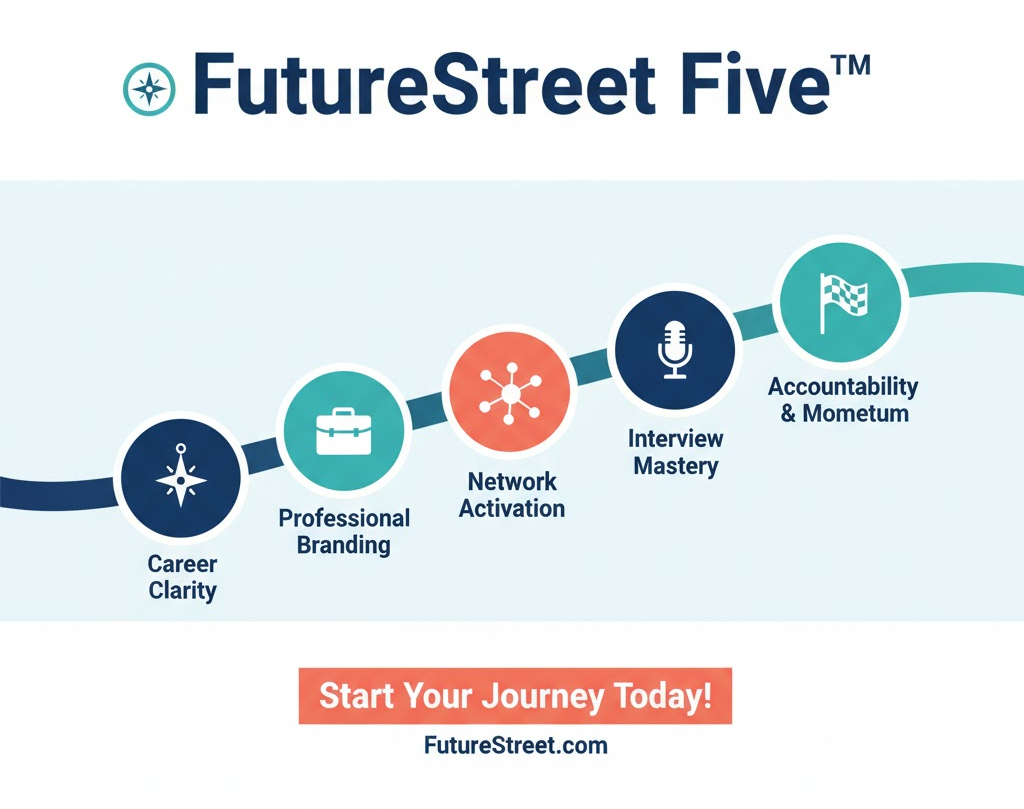
Inconsistencies, typos, exaggerated achievements, or unexplained gaps.
Recruiters scan fast—7 seconds on average. Clarity, formatting, and keywords buy you time.
“Ninja,” “guru,” “rockstar,” “dynamic,” “results-driven.” Replace with evidence.
Emphasize adaptability, remote skills, AI fluency, and measurable results.
Six to eight seconds. But a resume that’s clean, relevant, and quantified earns a longer look — and a callback.


